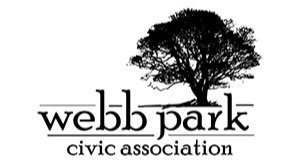Webb Park History
Webb Park is a not so new name for several distinct historic subdivisions, originally Richland Plantation owned by the civil war hero, Captain Oliver "Ollie" Steele.
Steele Place
Originally a pecan grove in Richland Plantation, Steele place was developed by Anthony F. "Tony" Cazdessus in the 1920s and is bounded by Claycut Road and Hundred Oaks Avenue, also by Westmoreland Avenue (formerly Topic Street) and the west side of Glenmore Place. Steele place is known for its wide boulevard and large "arpent" sized lots. At its Claycut entrance there are four distinct brick and concrete ornamental pillars built by August Ledoux.
Walnut Hills
Steele Place resident, John H. Ramsey, purchased the 80 acres from Cazdessus and developed Walnut Hills in the 1940s. He and his family personally planted the seedlings that have grown into magnificent live oaks that tower over the subdivision. Walnut Hills is a horseshoe configuration bounded by Hundred Oaks, Ramsey Drive, and Glenmore Avenue. Churchill Avenue is in honor of Winston Churchill and Chattfield came from his wife's family. So many physicians lived in the neighborhood during the 50s & 60s that is became know as "Pill Hill."
Glenmore Place
When Jim Thomas and Ralph Ford developed Glenmore Place in 1940 it was in the country, out of the city limits. Jim Thomas planted an oak tree on every lot and sold an additional oak tree for $25. Lots initially sold for less than $1000 and homes were typically constructed here for $5000.
Country Club Place
Developed at the same time as Glenmore Place, Country Club Place was named for the Westdale Country club which was founded in 1924. In the 30s and 40s, the country club was a thriving social scene sponsored by Exxon for its senior executives. It began as a nine hole course, but soon expanded to eighteen. LSU acquired the golf course and club house in 1936 before it was sold to BREC in 1957. The clubhouse was renamed to Webb Memorial Park following the death of Mayor-president, Jesse Webb, Jr. in 1955.
Westdale
The Westdale area extends from College Drive to Country Club Drive, between Hundred Oaks and Woodside Drive and includes the subdivisions of Westdale Terrace, Westdale Woods and Westdale Heights. The first prefabricated construction homes in Baton Rouge , the Crawford homes debuted here in the 1950s. Original residents remember when the only buildings on College drive were Westdale elementary and WAIL radio station.
